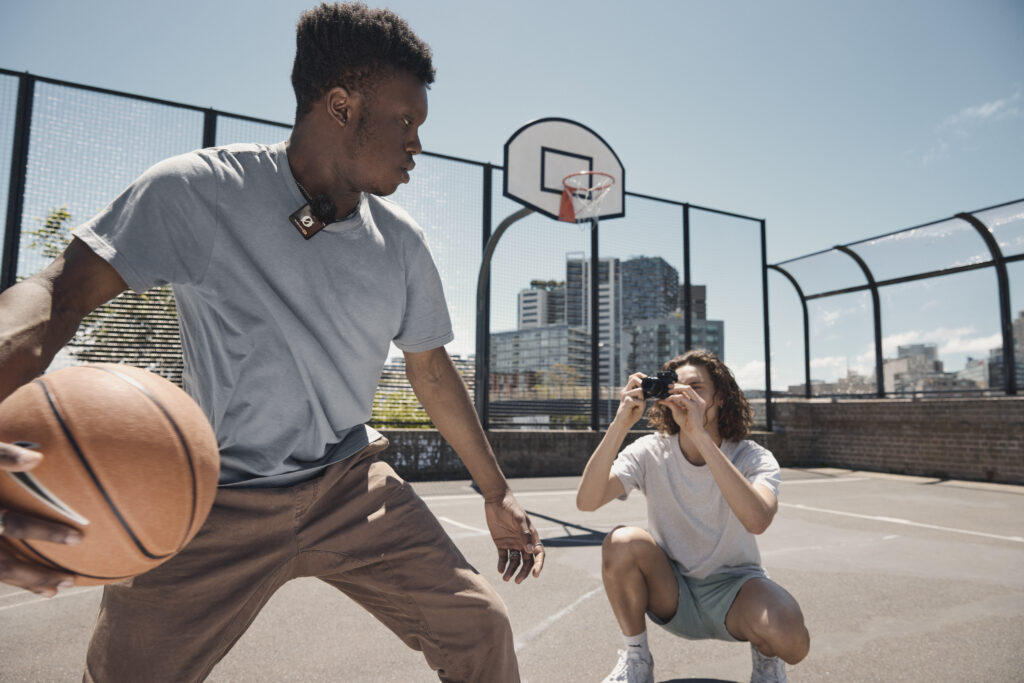Highlights
Table of Contents
Explore article topics
Calling all creators, it’s time to turn up the sound quality of your videos with our latest competition. We’ve partnered with RØDE to give you the chance to win 1 of 3 incredible prize packs which include a RØDE microphone and 1-year Artlist subscription.
Before we jump into the checklist, let’s take a moment to discuss why you might want to consider buying a microphone.
Where to begin
Searching for a new microphone can be a little overwhelming, especially if you’re new to audio recording. You might even be wondering if a standalone microphone is even necessary.
With so many options available it’s difficult to know where to start. However, having a checklist will help you work out what you need, narrow down your options, and choose the right mic for you.
Read on for our simple checklist and top tips to help you navigate the process in 2023.
Why should I use a microphone?
Nowadays most cameras and phones come with built-in microphones, so unless you’re planning on recording sound effects in a studio, or podcasting, why spend extra on an external microphone?
Don’t get us wrong, you can record sound with built-in mics, and like any highly-portable all-in-one equipment, they certainly serve a purpose. However, when you factor in environmental sounds like wind, general noise, and other interference they tend to fall short, and just can’t produce the same quality of sound as a standard microphone. They are good, but not great, and ultimately if you want to look and sound professional you’re better off investing in a proper microphone.
Now that we’ve got that settled, here’s how to work out what kind of microphone will work best for you.
Purpose
Before buying a microphone, it is essential to decide what you need it for —will you be using it for podcasting, voiceovers, singing, gaming, or video recording? Knowing the purpose of your microphone will help you choose the right type of microphone, polar pattern, and frequency response. Another important factor to consider is portability, if you’re planning on creating content on the go, you’ll want a simple set-up, perhaps even a wireless or Lavalier mic to make things even easier. However, if you’re recording podcasts often a hands, free desktop microphone is the best choice.

Type of microphone
There are two main types of microphones: dynamic and condenser.
- Dynamic microphones are durable, affordable, and suitable for recording loud sounds. These are perfect for large outdoor events and are often used for large outdoor events because they’re durable and don’t need a power supply.
- Condenser microphones are more sensitive, require phantom power, and are suitable for recording quieter sounds. These microphones are often used to record vocals or anything that requires a more focused sound.
After you determine which type of microphone best suits your needs, it will be a lot easier to narrow down your search.
Polar pattern
Don’t worry, we’re not asking you to think but to geography class. Simply put, the polar pattern of the microphone is the direction of the device that’s most sensitive to sound. We’ll break this down – there are three main types of polar patterns — cardioid (front-facing), bidirectional (front and back), and omnidirectional (all directions). We could go into a lot of technical information here about how these different mics work. But, cardioid mics are best for recording expressive vocals like singing, bidirectional are great for interviews or capturing sound from the front and back of a toom, and omnidirectional microphones produce a more natural sound, however, they will pick up more background noise, so they aren’t the best choice in windy environments, or when you need to isolate a sound.

Frequency response
Microphone frequency response is how well a microphone captures different frequencies of sound and the microphone’s sensitivity changes at different frequencies, and how accurately it reproduces the original sound source.
For example, a microphone with a “flat” frequency response will reproduce all frequencies equally, while a microphone with a “boosted” bass response will emphasize lower frequencies, making it suitable for recording bass-heavy instruments like drums or bass guitars. Similarly, a microphone with a “boosted” high-frequency response may be ideal for recording vocals or acoustic guitars with plenty of high-end detail.
The frequency response is important to consider, but remember, it’s also just one factor that affects the overall sound quality of a recording. Other factors such as the room acoustics, the placement of the microphone, and the quality of the recording equipment can also have a significant impact on the final sound. So it’s best to determine the types of sounds you will be recording, and when in doubt an all-rounder microphone is your safest bet.
Budget
Microphones come in a range of prices, from budget-friendly to high-end. You’ll want to strike a balance between quality and affordability. While professional-grade microphones may provide exceptional sound quality, they can be quite expensive. If you’re on a tight budget, you can find affordable options that still offer decent performance for your intended use.
It’s always a good idea to do thorough research and compare different models and brands within your budget. Read reviews, watch video demos, and gather information about their features, performance, and durability. This way, you can make an informed decision and choose the best microphone that meets your requirements within your budget.
Get unlimited high-quality music for your videos
Accessories
Some microphones come with accessories, such as shock mounts, pop filters, and windshields. While some will require you to add these accessories after purchase. The good news is — often, you can find good deals on reputable marketplaces or from trusted audio equipment resellers. Just make sure to inspect the condition, warranty, and return policies before making a purchase.
Conclusion
If you’re looking to improve the sound quality of your videos, you can’t go past a stand-alone microphone. But it’s not always possible to capture all the audio you need yourself, Artlist also has a wide range of high-quality music, footage, and sound effects, for any project, ready to download now.
How to enter the Artlist x RØDE giveaway:
- Follow @artlist.io and @rodemic on IG
- Comment and tell us what’s the first video you’ll be working on with your new gear
- Tag a friend who needs to join this giveaway
The prizes:
The most original comment will win the grand prize of a RØDE Wireless ME with Lavalier and Interview GO + 1-year Artlist Max subscription (value $480)
The 2nd place will win a RØDE NT-USB+ & 1-year Artlist Music & SFX Pro subscription
3rd place will win a RØDE NT-USB Mini & 1-year Artlist Music & SFX Pro subscription
* The winners will be chosen by Artlist & RØDE and announced on our Instagram Stories on Wednesday, May 31st, 2023.
The last day to enter is Tuesday, May 30th, 2023
View the Artlist x RODE giveaway Terms & Conditions
Share this article
Did you find this article useful?
Related Posts
Latest Posts
- 17 Apr
- By Daniela Bowker
- 7 MIN READ
- 15 Apr
- By Rebecca Helfenbaum
- 4 MIN READ
